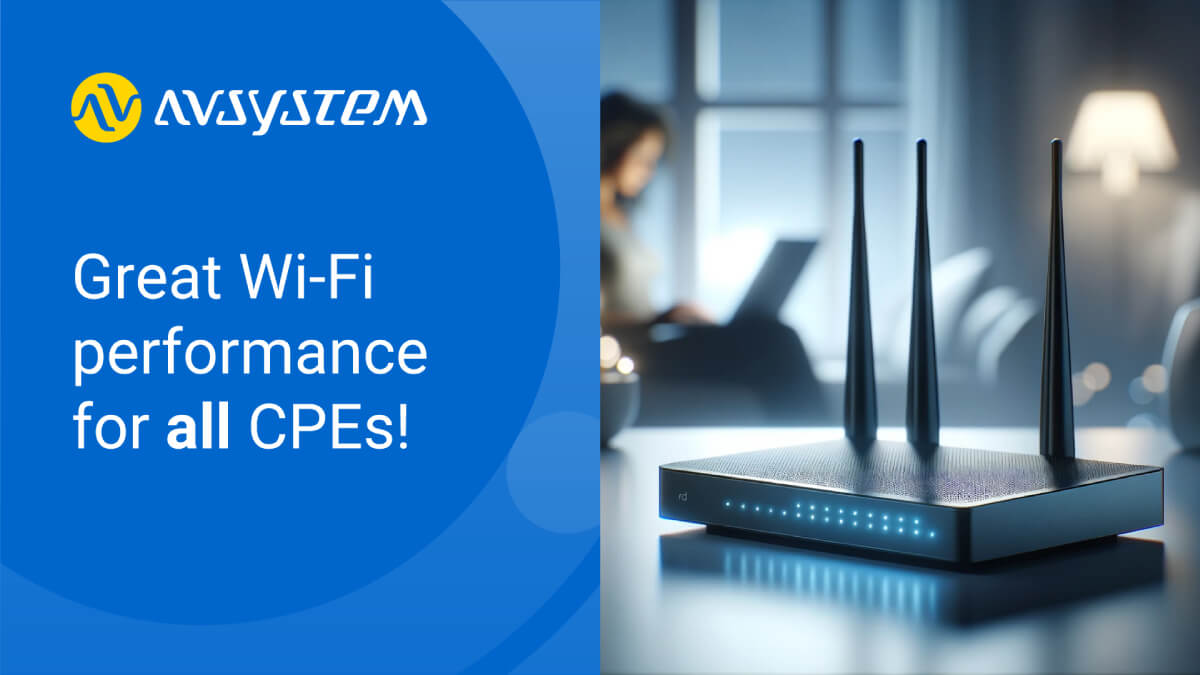Fast or Furious

In the realm of internet services, speed isn't just a number—it's a promise, a performance marker, and often, a deal-breaker. As users increasingly rely on digital mediums, understanding, measuring, and optimizing connection speed becomes paramount. This guide dives into the world of speed tests, presenting insights into the technological intricacies, the challenges, and the solutions at hand.
Why do CSPs need speed tests?
For many customers, speed is the barometer of service quality. In a competitive market, any dip in performance can lead to a migration of subscribers to rival operators. While users can easily test their connection speed via publicly available tools, these test results are not accessible to CSPs unless they offer an integrated mobile app or... Customers call with a complaint to the Customer Care staff.
Have you noticed complaints about the service quality? Get ahead and fix issues before customers churn.
The solution to maintaining service quality? Proactive speed testing. This approach grants CPSs full visibility of the service level, allowing them to address and rectify issues even before the customer registers a complaint. Additionally, they might be lawfully required to measure and report the available bandwidth as declared in the Service Legal Agreement (SLA).
While the concept may sound straightforward, the actual process is more intricate. The speed of an Internet connection can be influenced by numerous factors, including devices, equipment, environment, and access technology. This underscores the importance of selecting the appropriate tools and methods to ensure accurate results.
Speed tests methodology
The methodology behind speed tests forms the foundation for accurately gauging the performance of internet connections. At its core, a speed test measures the rate at which data packets are sent and received over an internet connection, typically in terms of megabits per second (Mbps). The process begins by establishing a connection between the user's device and a dedicated server, ideally, one that's geographically close to ensure minimal interference from network congestion or physical distance.
The first metric usually assessed is the latency, representing the time it takes for a data packet to travel from the source to the destination and back (how fast the reaction time is). It's a critical factor, especially for real-time activities like video calls or online gaming, where a delay can severely affect the user experience.
Following the latency measurement, the speed test evaluates the download speed. Here, a data file is sent from the server to the user's device. This metric illustrates the speed at which users can receive data from the internet, be it streaming videos, downloading files, or browsing web pages (or how fast a given volume of data is transferred).
Subsequently, the upload speed is assessed by reversing the process: a file is sent from the user's device to the server. This measurement is crucial for activities like uploading videos, making video calls, or any task that requires sending data to the internet.
However, it's essential to understand that various factors can influence these results. The chosen server's proximity, the quality of the device's connection (wired or wireless), current network traffic, and even the device's hardware capabilities can all play a role in the outcome. Therefore, for comprehensive accuracy, multiple tests at different times and conditions are recommended.
Recent methodologies also incorporate additional metrics like "jitter", which measures the variability in latency over time, and "packet loss", indicating how many data packets fail to reach their destination. These are especially important for VoIP services and streaming.
Modern methodologies standardised by the Broadband Forum like TR-143 and TR-471 have refined the testing process, catering specifically to telecom providers. They allow for detailed diagnostics, enabling these providers to ensure their services meet the advertised speeds. Such standards, coupled with popular speed testing tools, empower both providers and consumers with data-driven insights, ensuring transparency and driving continuous network improvements.
What to consider when choosing a speed test method?
Selecting the most suitable speed test method is a pivotal decision for ISPs and CSPs. The chosen method not only influences the accuracy of results but also determines how actionable and relevant the data is for various stakeholders. Here are some fundamental considerations to factor in when deciding on a speed test method:
- Depth of Diagnostics Required: Some methods offer surface-level results, providing basic information like download and upload speeds. In contrast, others delve deeper, measuring aspects like latency, jitter, and packet loss, essential for specialized needs, such as VoIP quality assessment.
- Hardware and Infrastructure: Consider the device where the test will be conducted. Consumer-grade devices might not have the computational power to handle intensive speed tests, potentially skewing results. TR-143 tests, for example, are often affected by the performance capabilities of the CPE (Customer Premises Equipment).
- Test Server Proximity: The physical location of the server used for testing can greatly influence results. The closer the server, the lesser the chances of latency introduced due to geographical distance. It's beneficial to opt for methodologies or platforms that allow server selection based on proximity.
- External Influencing Factors: Speed test results can be impacted by various external factors – network congestion, time of day, or even the type of connection (wired vs. wireless). Ensure that the chosen method can account for or mitigate these variables for more consistent outcomes.
- Scalability and Frequency: If you're an ISP or a large organization, consider how scalable the testing method is. Can it handle thousands of tests performed simultaneously across multiple endpoints? Regularity is another aspect; some protocols, like TR-143, are designed for monthly checks to ensure consistent performance.
- Evolution and Upgrades: The digital landscape is ever-evolving. Opt for methodologies that are regularly updated or have newer versions (like TR-471 succeeding TR-143) to ensure you're always equipped with the most current and refined testing tools.
- User Involvement: Some tests, like publicly available speed testing tools, require active user participation, whereas others can run seamlessly in the background. Depending on the end goal, decide whether you prefer a hands-on or automated approach.
- Data Interpretation and Reporting: Lastly, consider the format and depth of the report generated. Data is only as valuable as the insights derived from it. Ensure that the chosen method offers comprehensive and easy-to-understand reporting metrics.
In essence, the right speed test methodology marries accuracy with relevance, catering to the unique needs of the organization. It combines technical precision and practical applicability, ensuring that internet speeds remain transparent, reliable, and optimized.
Speed Test methods - brief comparison
TR-143, TR-471, and publicly available speed test servers each offer unique approaches to speed testing. TR-143 enables active performance monitoring and diagnostics within a subscriber's service, while TR-471 defines performance testing methodologies for network elements and services, primarily in pre-deployment scenarios. In contrast, public speed test tools give a broader, user-centric perspective on network performance, often assessing speed from the user's device to an external server. Recognizing the primary function and differences of each tool is vital when determining the most suitable method for network performance evaluation.
| TR-143 | TR-471 | Publicly available speed test servers | |
|---|---|---|---|
| Purpose | Broadband Forum standard for CPE diagnostics, primarily for ISPs. | Evolved Broadband Forum standard offering refined diagnostic capabilities (aka TR-143 upgrade). | Web or mobile tools for measuring download/upload speeds, latency, and jitter. |
| Initiation Mechanism | Remote diagnostic mechanism for throughput performance tests. | Enhanced remote diagnostic measures and accuracy. | User-initiated on devices like mobile phones, and tablets. |
| Hardware Dependency | Influenced by CPE's CPU performance, can underreport speeds. | Aims for accuracy, addressing TR-143's CPE performance limitations. | Independent of CPE, runs on the user's device (STA or UE), but can be impacted by WiFi congestion. |
| Server selection | May statically select a test server, including a dedicated server. | Similar flexibility as TR-143. | Connects to the “nearest” available server. |
| Test scope | Measures network throughput and performance. | In-depth, accurate measurements. | Measures download/upload speed, latency, jitter. |
| Latency Impact | Impacted by server load, CPE-side implementation, server latency. | Improved resilience against varying latencies. | Influenced by network connection, backhaul, internet connection. |
| External Factors | Influenced by server load, CPE-side implementation, server latency. | Better resilience against external factors than TR-143. | Varies with network congestion, time of day, connection type, etc. |
| User Involvement | Runs without end-user engagement, as a command executed by CPE. | Similar to TR-143 in user involvement. | User must actively execute the test within e.g. a mobile application by requesting the test. |
| Integration | Integrates with TR-069/TR-369 platforms. | Integrates with TR-069/TR-369 platforms. | SDK is offered for integration with specific applications. |
| Use Case | Remote diagnostics by ISPs for network performance. | Enhanced diagnostics for ISPs. | Preferred by general consumers and technicians for immediate speed checks. |
So what are the real benefits of TR-471 over TR-143?
TR-471 uses UDP instead of TCP, so it consumes fewer resources on CPE and server sites. In TR-143 CPE’s processing power may become the bottleneck - like a drastic bandwidth drop, still useful for diagnostics.. Besides reporting pure speed, TR-471 can measure under specific conditions of latency & packet loss, mimicking real user experience, and tracks sophisticated metrics like RTT & one-way-delay. Lastly, TR-471 may bypass network traffic compression techniques - which is useful but may distort speed test results.
Tough TR-143 has some limitations, it still provides a huge benefit. It may not be possible to pinpoint the maximum CPE’s capabilities, but easily indicates dropping service quality below desirable thresholds. Think about this: the end customer has a 1Gbit link, and the speed test may gauge up to 100 Mbit, BUT if it returns 20 Mbit, it indicates something wrong happens with the service.
Still not sure which method suits your business best? Let us help!
Speed tests with Unified Management Platform ACS
For us, speed tests are not just diagnostic tools. They are critical in ensuring customer satisfaction. In fact, they are an essential part of TR-069/TR-369 solutions, which are used in the CPE (Customer Premises Equipment) fulfillment ecosystem. We understand the importance of this relationship, which is why we provide solutions built on open standards. This approach ensures that Communication Service Providers (CSPs) can maintain flexibility and adaptability in their operations without being locked into a particular vendor. This ethos not only supports agility in a rapidly changing market but also ensures the delivery of superior service quality to the end-users.
Our core product, Unified Management Platform (UMP) ACS, seamlessly incorporates TR-143 & TR-471 capabilities, with an emphasis on customizability and extensibility. This flexibility extends to the selection of the test server used for speed tests. Whether providers prefer a built-in solution, an externally hosted one, or even an external 3rd party server, UMP supports them all, ensuring that speed tests are not just rudimentary checks but are comprehensive, automated, and tailored to the specific needs of the CSPs and, by extension, their customers.
But, to be honest, speed tests are just one aspect of our larger vision. They provide essential feedback, but our ultimate goal is to enhance the overall broadband experience, particularly the WiFi connectivity. Our goal is to provide consistent and dependable connection speeds in this interconnected era.
Beyond speed - outcomes of effective speed tests
Effective and accurate speed tests, supported by our ACS, are a basis for a seamless digital experience, significantly influencing user satisfaction and service provider operational dynamics. The ACS stands as a backbone for both TR-143 and TR-471 speed tests, ensuring precision and reliability. From the user's perspective, such meticulous speed tests offer a genuine reflection of their network's capabilities, assuring them of the service quality they've been promised.
This precision has a cascading effect on businesses. Users, experiencing consistent and promised network speeds, naturally grow more loyal to the service. This strengthened trust curtails the likelihood of customers migrating to competing services, thus drastically minimizing customer churn.
But the benefits don't stop there. Our Customer Experience Management Platform, perfectly integrated with UMP ACS, further enriches the monitoring process by considering an expansive data spectrum. Beyond speed tests, this platform elevates user experience monitoring, granting deep, actionable insights. By pinpointing potential network inefficiencies or areas needing improvement, service providers can not only preemptively rectify issues but also spot upselling opportunities.
Recommended posts
- Understanding CPE Requirements for Optimizing Smart Wi-Fi Performance
- Why choose open standards for WiFi service assurance?
- Solving Key Challenges of Fritz!Box Users With Cloud ACS
Subscribe to stay in the loop with all our latest content:
Recommended posts



